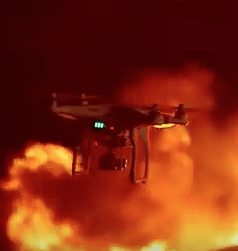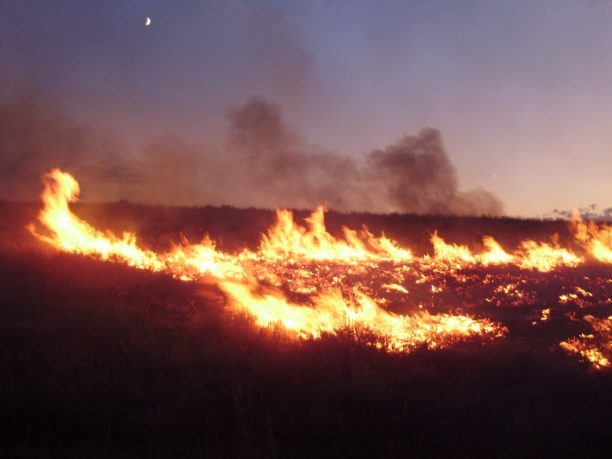
DRONELIFE is attending the InterDrone conference in Las Vegas this week, and one of the early sessions hits a rapidly growing vertical in the drone industry: law enforcement and emergency response. In a large room filled mostly with emergency services departments, many in uniform and almost all of whom are currently implementing a drone program, DJI‘s Romeo Durscher moderated a panel of law enforcement, training, and drone specialists to discuss opportunities for emergency response teams.
Panelist Chief Wayne Baker of the city of Joshua, TX, said that drones are used to save lives – those of civilians and those of officers. Baker spoke about the uses of drones in his area, saying that his program has not only saved homes during wildfires but saved the lives of officers during active shooter incidents and suspect searches, when a drone provides invaluable information.
“One of the lessons that we’ll learn from Harvey is the need for pre-event footage – the focus has always been during incidents, but now it is moving towards pre-incident.” said Durscher. Chief Baker agreed – after the hurricane, his area now plans to use aerial footage to review flood plains in addition to planning exit routes for fires and other disasters. “If they’re going to restore, they need to put things back to where they were before…” said Baker. “You need to know what that looked like.”
Allen Beach of Argus Rising, a training company focused on first responders, said that uses of drones in emergency response are continually expanding. Argus Rising spends three days teaching orthomosaics and 3D mapping in order to facilitate pre-event use in their program. Beach points out that review of buildings and public spaces before an event can help law enforcement to plan exit routes and responses during an active shooter event or other incident. “It’s all about information,” says Beach. “Drones provide you with the information you need – that’s what we teach.”
Trooper Ross Miller says that his team uses drones to assess accident scenes, reconstructing the event to determine what happened and who might have been at fault. But he says that with a new program – there are currently only 4 drones in his state – implementation requires careful coordination of resources. All of the panelists agreed that as the use of drones in law enforcement and firefighting expand, it is most useful for new drone programs to specialize at first. Rather than using a new drone for firefighting, accident review, crime scenes and crowd control: “Choose one or two missions and get really good at them,” says Beach. “Then you can expand, and the program will expand quickly. Don’t try to sell the drone as doing all things for all people.”
The panelists and the audience made one point abundantly clear – drones are showing their value in law enforcement and emergency response, and their use is growing fast.
Miriam McNabb is the Editor-in-Chief of DRONELIFE and CEO of JobForDrones, a professional drone services marketplace, and a fascinated observer of the emerging drone industry and the regulatory environment for drones. Miriam has penned over 3,000 articles focused on the commercial drone space and is an international speaker and recognized figure in the industry. Miriam has a degree from the University of Chicago and over 20 years of experience in high tech sales and marketing for new technologies.
For drone industry consulting or writing, Email Miriam.
TWITTER:@spaldingbarker
Subscribe to DroneLife here.
